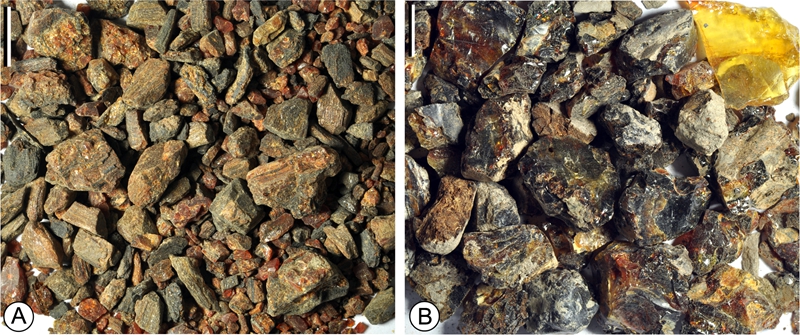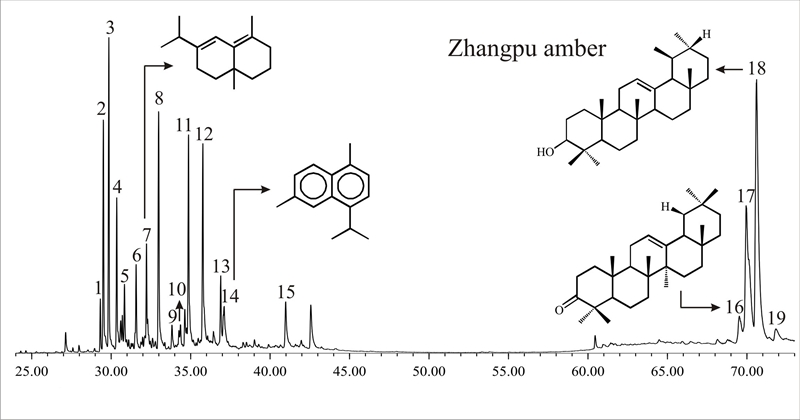As a beautiful and mystical substance that is suitable for making jewelry and handiwork, amber is very popular in the world. It has been recognized for a long history that amber was produced by ancient trees. In the Tang Dynasty of China (618-907 A.D), the poet WEI Yingwu suggested that amber was derived from ancient conifers in his poem ‘Amber’. However, the plants from which amber was probably produced are far more than conifers. Biomarker studies shows that terpenoids in resins are often diagnostic for certain plant groups. Albeit various chemical transformations during burial, the terpenoids in fossil resins often retain their characteristic basic structural skeletons and can thus be used as biomarkers for botanical origins of the amber. Based on compositions of terpenoids, the plant families that have been suggested as producer of amber include Pinaceae (Burmese amber), Cupressaceae (Fushun amber), Sciadopityaceae (Baltic amber), Araucariaceae, Leguminosae (Dominica amber), Dipterocarpaceae (Cambay amber), Burseraceae, Hamamelidaceae, Combretaceae and the extinct conifer family Cheirolepidiaceae (Lebanese amber).
In a recent research, Dr. SHI Gongle and Dr. WANG Bo from Nanjing Institute of Geology and Palaeontology, Chinese Academy of Sciences and colleagues from Indian Indian Institute of Technology Bombay, Mumbai and Xishuangbanna Tropical Botanical Garden, Chinese Academy of Sciences studied the terpenoid compositions of the Late Cretaceous Xixia amber from Central China and the middle Miocene Zhangpu amber from Southeast China using gas chromatography-mass spectrometry. The results indicate the Xixia amber is most likely derived by the conifer family Araucariaceae but a contribution from Cheirolepidiaceae cannot be excluded. The Zhangpu amber is suggested as contributed by the tropical angiosperm family Dipterocarpaceae. The occurrence of fossil winged fruits of Dipterocarpaceae in the Fotan Group of Zhangpu confirms a Dipterocarpaceae origin of the Zhangpu amber.
This work was recently published in PLoS ONE and it was supported by the National Natural Science Foundation of China and State Key Laboratory of Palaeobiology and Stratigraphy.
References: Shi G., Dutta S., Paul S., Wang B., Jacques F.M.B., 2014. Terpenoid compositions and botanical origin of Late Cretaceous and Miocene amber from China. PLoS ONE, 9(10), e111303. doi:10.1371/journal.pone.0111303
Shi G., Jacques F.M.B., Li H., 2014. Winged fruits of Shorea (Dipterocarpaceae) from the Miocene of Southeast China: Evidence for the northward extension of dipterocarps during the Mid-Miocene Climatic Optimum. Review of Palaeobotany and Palynology 200, 97-107.

Fig. 1. Xixia amber (A) and Zhangpu amber (B).

Fig. 2. Total ion chromatogram of Zhangpu amber.
